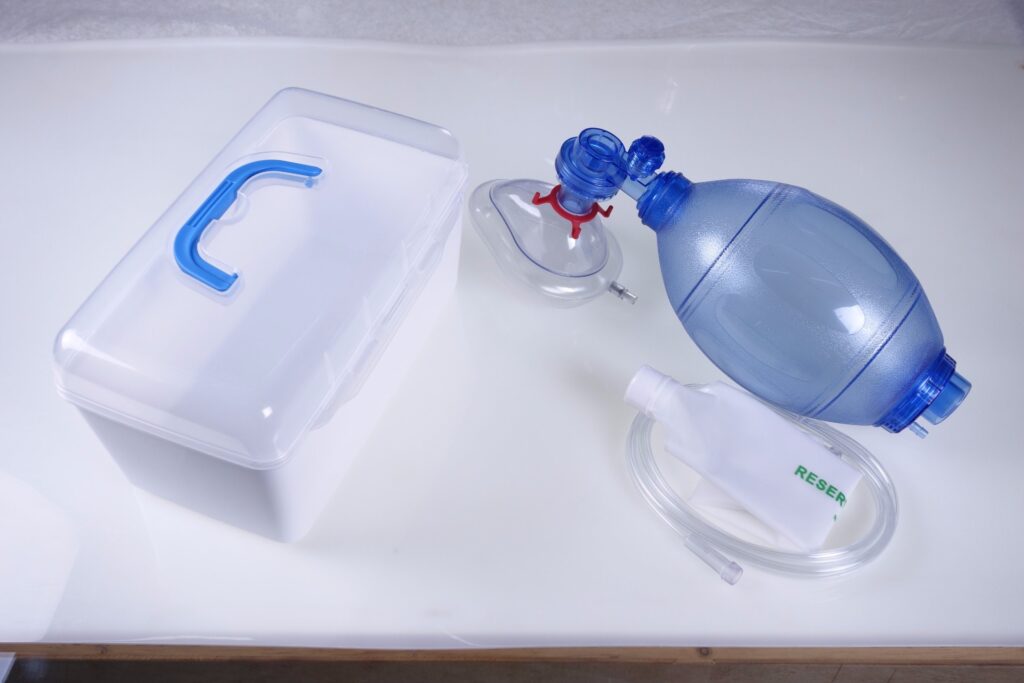
The global manual resuscitator market is set for steady growth, with an estimated value of USD 647.6 million in 2024, projected to reach USD 1,204.3 million by 2034, reflecting a CAGR of 6.4% over the forecast period. This growth is driven by the continued demand for essential resuscitation equipment in hospitals and emergency care settings. Manual resuscitators, which are widely used for patient resuscitation in critical situations, remain a key component in emergency medical practices, despite increasing competition from automatic resuscitation devices.
While manual resuscitators continue to be integral in many medical procedures, the rise of automatic resuscitators is reshaping the market. These devices offer significant advantages, including the reduction of human error and the ability to deliver consistent, controlled ventilation to patients in need of resuscitation. As technology continues to advance in healthcare, the preference for automatic versions of resuscitators is increasing, particularly in hospitals where precision and efficiency are critical. Automatic resuscitators also offer the benefit of saving energy and reducing the physical strain on healthcare providers during emergency procedures.
However, manual resuscitators are still in high demand due to their affordability, portability, and ease of use in various emergency scenarios. Their continued adoption, especially in settings with limited access to advanced equipment, ensures the sustained growth of the manual resuscitator market, even as the preference for automated devices rises.
Key Takeaways:
- The global manual resuscitator market is expected to grow from USD 647.6 million in 2024 to USD 1,204.3 million by 2034, at a CAGR of 6.4%.
- Automatic resuscitators are gaining traction due to their ability to eliminate human error and improve energy efficiency, offering significant competition to manual devices.
- Manual resuscitators continue to be essential due to their affordability, portability, and widespread use in emergency care.
- The adoption of automatic versions of resuscitators is increasing, particularly in hospitals, due to their enhanced precision and reduced reliance on healthcare providers.
Competition Outlook
The manual resuscitator market is fairly fragmented, with several companies vying for share and with room to grow for enterprises of all sizes. As with other healthcare sector players, partnerships with research organizations and public healthcare institutions are being sought.
One of the prominent companies in the industry, Vyaire Medical Inc., faced a setback recently. The company had to recall certain versions of its AirLife product due to a manufacturing defect. Ambu A/S looks to innovate to keep demand flowing. The company’s oval silicone resuscitator is a popular product.
Industry Updates
In September 2023, a mini cardiac medical camp and CPR awareness camp was held in Madurai, India to raise awareness about resuscitating patients.
Access the Full Report
Leading Manual Resuscitator Brands
- Vyaire Medical Inc.
- Ambu A/S
- Medtronic
- Teleflex Inc.
- Medline Industries Inc.
- Allied Healthcare
- Hopkins Medical Products
- GE Healthcare
- Covidien Plc.
- Drager Medical AG and Co.
- Laerdal Medical
Key Segments of Market Report
By Product Type:
Based on the product type, the manual resuscitator market is segmented into flow-inflating manual resuscitator, self-inflating manual resuscitator, and t-piece.
By Usage:
Based on usage, the manual resuscitator market is bifurcated into disposable and reusable.
By Material:
Based on material, the manual resuscitator market is segmented into silicone, PVC, and rubber.
By Technology:
Based on technology, the industry is segmented into pop-off valves, PEEP valves, and others.
By Type of Patient:
Based on the type of patient, the industry is segmented into pediatric, adults, neonates, and infants.
By End Use:
Based on end use, the market is segmented into the hospitals, out-of-hospitals (home care, community care, primary care), ASC, military, and others (specialized diagnostic centers, specialized clinics)
By Region:
The sector has been analyzed in the key countries of North America, Latin America, Europe, South Asia, East Asia, Oceania, and the Middle East and Africa.
Author By:
Sabyasachi Ghosh (Associate Vice President at Future Market Insights, Inc.) holds over 12 years of experience in the Healthcare, Medical Devices, and Pharmaceutical industries. His curious and analytical nature helped him shape his career as a researcher.
Identifying key challenges faced by clients and devising robust, hypothesis-based solutions to empower them with strategic decision-making capabilities come naturally to him. His primary expertise lies in areas such as Market Entry and Expansion Strategy, Feasibility Studies, Competitive Intelligence, and Strategic Transformation.
Holding a degree in Microbiology, Sabyasachi has authored numerous publications and has been cited in journals, including The Journal of mHealth, ITN Online, and Spinal Surgery News.
About Future Market Insights (FMI)
Future Market Insights, Inc. (ESOMAR certified, recipient of the Stevie Award, and a member of the Greater New York Chamber of Commerce) offers profound insights into the driving factors that are boosting demand in the market. FMI stands as the leading global provider of market intelligence, advisory services, consulting, and events for the Packaging, Food and Beverage, Consumer Technology, Healthcare, Industrial, and Chemicals markets. With a vast team of over 400 analysts worldwide, FMI provides global, regional, and local expertise on diverse domains and industry trends across more than 110 countries.
Contact Us:
Future Market Insights Inc.
Christiana Corporate, 200 Continental Drive,
Suite 401, Newark, Delaware – 19713, USA
T: +1-347-918-3531
For Sales Enquiries: sales@futuremarketinsights.com
Website: https://www.futuremarketinsights.com
LinkedIn| Twitter| Blogs | YouTube